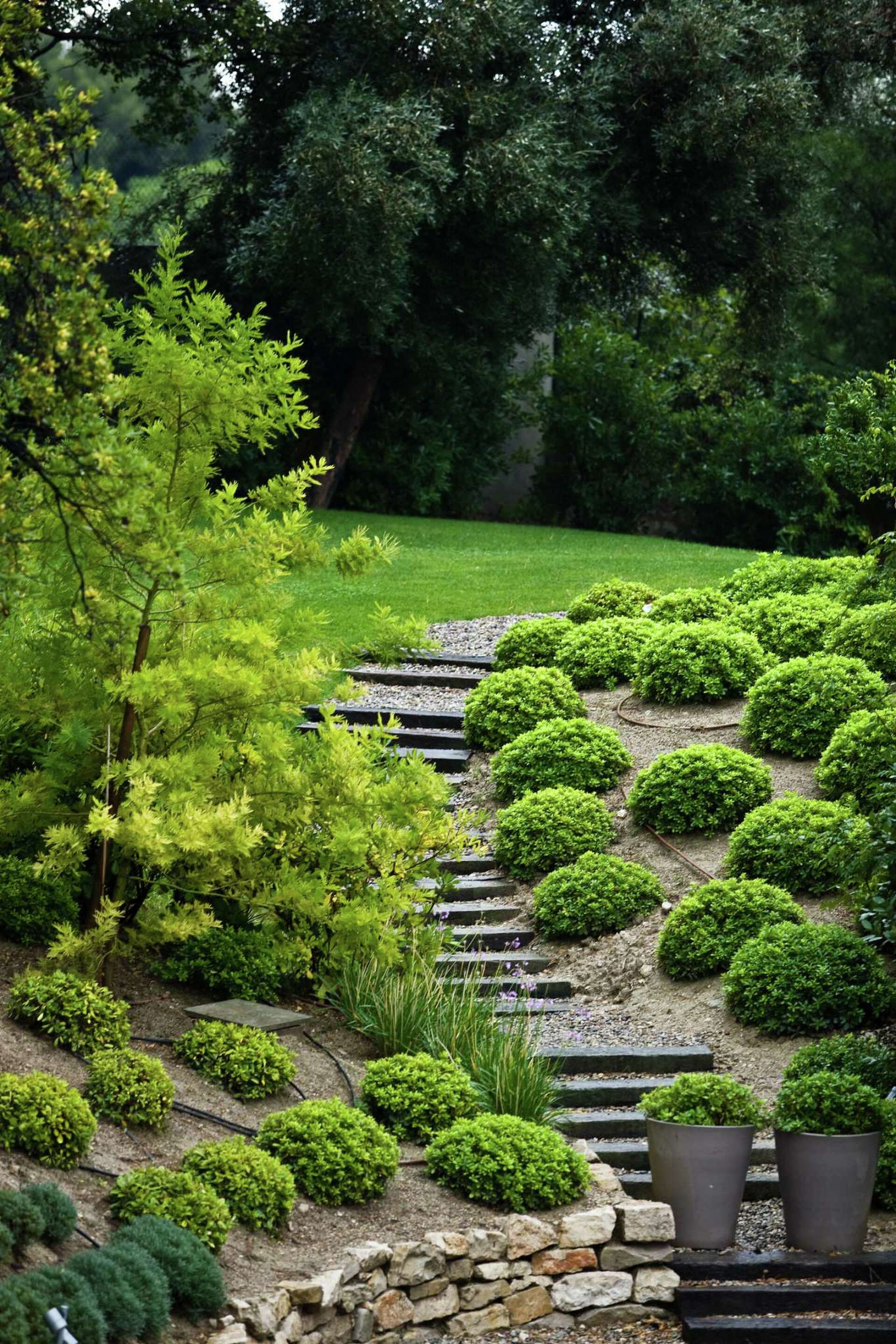Building strong foundations for Steep hill landscaping without hassle.
Building strong foundations for Steep hill landscaping without hassle.
Blog Article
Achieve a Beautiful Outside Sanctuary With Thoughtful Steep Hill Landscaping Solutions
Transforming a steep hill into a fascinating outdoor sanctuary provides special challenges that call for ingenious landscape design options. Strategies such as terracing, the setup of preserving walls, and the option of native plants play important duties in this procedure. In addition, incorporating water features can better enhance the landscape's attraction.
Understanding Steep Hill Challenges
Landscape design on high hillsides provides one-of-a-kind challenges that call for cautious consideration and tactical planning. The disposition of the terrain can bring about problems such as soil erosion, water drainage, and restricted availability, all of which have to be resolved to develop a functional and aesthetically pleasing exterior space.
Among the main worries with steep hillside landscaping is disintegration, which can result from hefty rainfall or incorrect drain. This not only impacts plant health and wellness however can also threaten the security of the slope. Applying reliable erosion control procedures, such as planting ingrained vegetation or using mulch, is necessary in maintaining the honesty of the landscape.

Creating With Terracing Methods
To mitigate the difficulties posed by steep hillsides, including terracing methods can be an effective solution. This style approach changes a sloped landscape into a series of level, degree areas, creating a visually striking and useful outdoor area. Terracing not only helps to stop dirt disintegration but additionally promotes far better water drainage, which is important in maintaining the health and wellness of plants and the security of the hill.
When developing terraces, mindful factor to consider of the incline's angle and the soil type is necessary. Each terrace ought to be strategically placed to take full advantage of sunshine direct exposure while decreasing the risk of runoff. Using indigenous plants on each degree can boost biodiversity, advertise sustainability, and lower upkeep demands. In addition, integrating pathways between balconies can improve accessibility and motivate exploration of the landscape.
Terraced yards can offer multiple objectives, including vegetable production, decorative screens, or outside seating locations. By making use of materials that blend sympathetically with the surrounding atmosphere, the terracing can enhance the overall aesthetic charm of the home. Eventually, thoughtful terracing transforms steep hillsides into useful, gorgeous rooms that invite communication and enjoyment.
Carrying Out Maintaining Wall Surfaces
When faced with the challenges of steep surface, implementing maintaining walls can give both architectural support and aesthetic improvement to a landscape. my review here These wall surfaces offer to avoid dirt erosion, maintain inclines, and produce level areas for horticulture or entertainment use. Steep hill landscaping. By efficiently managing water drainage and reducing soil movement, retaining walls protect your landscape financial investment while enhancing security
Expert installation is important to ensure the durability and efficiency of retaining walls. Appropriate drainage systems have to be incorporated to relieve hydrostatic pressure, protecting against structural failure. Consulting with landscape professionals will guarantee that the style aligns with your overall vision while adhering to neighborhood regulations.
Choosing Indigenous Plants
Picking native plants for your landscape design supplies various environmental and visual read review advantages. Steep hill landscaping. Native plants are adapted to the regional climate and dirt problems, requiring much less water and maintenance contrasted to non-native types. This adaptability not just saves resources but likewise promotes a much healthier community, as native plants sustain local wildlife, including pollinators such as bees and butterflies
Incorporating native flora right into your steep hillside landscape design can boost dirt security, minimizing disintegration and promoting a balanced environment. Ingrained native plants help secure the dirt, making them perfect for sloped locations. These plants typically show vivid shades and varied structures, producing an aesthetically attractive landscape that balances with the surrounding atmosphere.
When picking native plants, consider their development habits, seasonal rate of interest, and compatibility with other types. Grouping plants with comparable water and sunlight requirements can result in an extra natural layout, while also streamlining upkeep. By choosing indigenous plants, you not only cultivate a lasting exterior sanctuary but likewise add positively to the local biodiversity, guaranteeing that your landscape thrives for several years to come.
Incorporating Water Features
Including water attributes right into your high hillside landscaping can significantly boost both the visual appeal and eco-friendly functionality of the room. The sound of moving water produces a calm ambience, while visually, it can act as a centerpiece that draws the eye and includes deepness to the landscape.
When choosing water features, consider alternatives that complement the all-natural contours of your hill. Waterfalls, as an example, can waterfall down the slope, developing aesthetic interest and advertising healthy and balanced water drainage. Fish ponds can also be incorporated right into the style, urging local wildlife and giving habitats for explanation different species.
Additionally, the positioning of plants around these attributes is crucial. Native aquatic plants not only improve the charm of the water feature but also add to its ecological balance by filtering system toxins and giving food for neighborhood fauna.
Maintenance is an additional key factor; make certain that your water feature is designed for very easy maintenance. An effectively built function will need minimal intervention, allowing you to appreciate the charm and tranquility it provides without too much labor. Inevitably, thoughtfully bundled water features can change your steep hillside landscape into a captivating outdoor oasis.
Final Thought
Finally, transforming a steep hill into a lovely outside sanctuary necessitates thoughtful landscaping techniques that address erosion control and ease of access. The integration of terracing techniques, the execution of maintaining wall surfaces, and the choice of native plants are vital components of efficient layout. In addition, integrating water features improves both aesthetic allure and drainage effectiveness. With careful preparation and execution, high hills can come to be calm hideaways that supply both functionality and visual joy.
Report this page